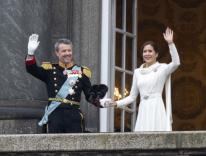As 2014 begins, we should bear in mind important anniversaries in the history of the Church. The Council of Constance, which was the high water mark of conciliarism in the Church and which ended the Western schism, began in 1414. The Society of Jesus, which had been suppressed in 1773 by Pope Clement XIV, was reinstated in 1814. And of course World War I, whose repercussions for the Church and the world continue to this day, began in 1914. I’m aware that the opening of a high school in New York City doesn’t match the significance of any of these events, but I hope you don’t mind if I pay tribute to Regis High School, a place that opened in 1914 and has stood for so many of us as a place of prayer and learning and of civility and community.
Recent discussions at dotCommonweal have focused on Catholic philanthropy and Catholic high schools. These discussions have made me think of Regis. I’m also thinking of it because last weekend, some 250 eighth graders were interviewed as part of the admissions process. (Roughly 1000 eighth grade Catholic boys in the New York metro area took an admissions test weeks before that. The top 250 scorers on that test were invited for interviews.) In a couple of weeks, around 140 will receive a letter offering them admissions. If tradition holds, more than 95% of those admitted will accept. I received such a letter on my birthday in 1993. My friend Robert Imbelli did as well a few years before that. (He’s a bit older than I am; it was harder to get in then.) Anthony Andreassi, a frequent presence in our comments, teaches history at Regis, and he’s just written Teach Me To Be Generous: The First Century of Regis High School In New York City, a history of the school. This year the school is celebrating its centennial with a series of events and a capital campaign.
I don’t pretend to offer anything important to the discussions we’ve had on wealth and philanthropy, but I’m continually amazed by the generosity that brought Regis into being. When the Jesuits, in the late 1540s, first began forming schools for adolescents, Ignatius Loyola wanted each school to be free for its students. As Regis’s website notes, “Writing to Philip II of Spain in 1556, the early Jesuits expressed themselves clearly: ‘All the well-being of Christianity and of the whole world depends on the proper education of youth.’ Ignatius desired that Jesuits run tuition-free schools available to all students who were qualified – ‘for everybody, poor and rich.’” On Christmas Eve 1912, Julia Grant, the widow of New York City mayor Hugh Grant, gave Fr David Hearn, SJ, the pastor of St Ignatius Loyola Church on Park Ave., $500,000 to found an all-scholarship Jesuit high school for Catholic boys. (That’s roughly $12,195,000.00 today.) There was to be a special consideration in admissions for those who couldn’t afford a Catholic high school education. The first class entered in September 1914, and every single student since then has received a full scholarship to the school. As far as I know, Regis is the only free private high school in America. Grant and her family asked to remain anonymous, and it was only in 2009, after Grant and all of her children has passed away, that their identity became public. Regis has survived because of the endowment that the family’s gifts and the generosity of its alumni. Thanks to such generosity, Ignatius’s vision remains alive.
The alumni themselves are an impressive lot. Although we can’t boast of a Supreme Court justice the way our elder brother and rival Xavier High School or another rival Hunter College High School can, I’m proud to be numbered among alumni who include the current bishop of Bridgeport, Conn., the presidents of Fordham and St John’s University in New York, a surfeit of attorneys and teachers, many doctors and bankers, nationally prominent news reporters, Saturday Night Live writers, actors, rock stars, and – one of my personal heroes – the priest whose life and ministry inspired On the Waterfront.
Were it just for the high caliber of Regis’s academic offerings, I doubt it would engender such loyalty among its alumni. My friends and I were fortunate to go to some of the best colleges and graduate schools in America, and all of us consider our four years of high school to be the most academically intense years we had. Certainly our teachers at Regis expected a lot from us. But that expectation went far beyond “learning the material.” (We certainly never were taught things because some standardized test awaited us.) Whatever we learned – from the ablative (or genitive!) absolute to the Krebs cycle, from equilibrium prices to the poetry of Gerard Manley Hopkins, from the Hapsburgs and the Roosevelts to quadratic equations – we learned so that we could become, in the words of Jesuit Superior Pedro Arrupe, “men for others.” We were to become men for those less fortunate than ourselves and also men for each other. I’ve never been part of a community of learning where the people cared so much for one another. No doubt we failed – and continued to fail -- to live up to that charge, but there is also no doubt that we understood what our charge was.
I can say about Regis what de Lubac said about the Church: without it, I wouldn’t know Him. The school offers its students a rich liturgical life complete with school-wide masses and small group retreats. Each student partakes in service projects throughout his time at Regis, and spends a considerable amount of time his senior year in direct service. The theology curriculum explores Church history, biblical studies, and ethics. Discussions of Christianity extend into each of the subjects beyond theology class and permeate the entire curriculum. The teachers are models of Christian discipleship. They help the students realize that the Catholic tradition is not a yoke that burdens or constricts, but a frame through which to understand. They taught us that love requires our intellects and that being a thoughtless Christian is a contradiction in terms.
As you can imagine, I could go on. Like any group of people, Regis High School has its faults, but I hope you can forgive me if I leave those to another day. I should note, however, that Catholic girls in the New York metro area do not have the opportunity to attend an all-scholarship Catholic school. Even though I am a great defender of single-sex education at the high school level, I would love to see an all scholarship girls’ school built with the help of Regis alumni.
Regis stands on 84th Street between Park and Madison Avenues. On the building’s façade, there is an inscription that reads “Deo et Patriae Pietas Christiana Erexit.” Christian piety built this for God and country. The most important lesson I learned on 84th Street was that “Deo et Patriae” and “Men for Others” aren’t snazzy mottoes, ready-made for brochures. They’re not “brands” created to distinguish Regis from the many fine schools in New York. Instead, these words are calls to action and ways of life. Students and alumni are fortunate to have models for these ways of life: the generosity of the founding family, the stewardship of the Jesuits, and the dedication of faculty, staff, and alumni. All of these people have been shaped by the One who took the form of slave, washed his friends’ feet, and loved them to the end. May Regis’s next hundred years be as faithful and fruitful as its first hundred.
Please email comments to [email protected] and join the conversation on our Facebook page.
Previous Story
Forensic Toxicology and the Inner-Circle Thrill
Next Story
Is global warming so bad?


